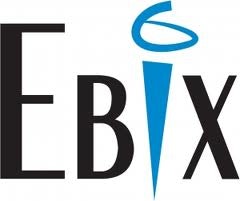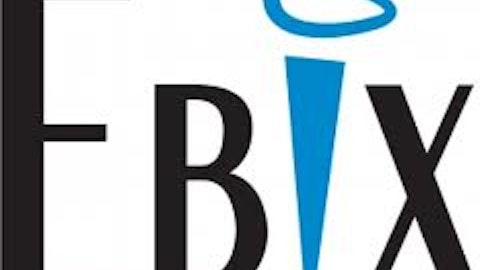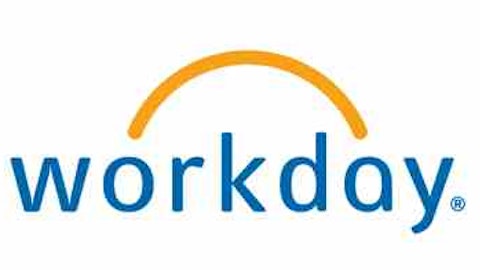With the stock market near all-time highs, many investors are getting defensive and buying large high yielding stocks in fear of a sell-off. This strategy makes sense, but how can you be sure the market will come to its senses?
Mr. Market certainly didn’t sell-off in the face of the “fiscal cliff” and with the Fed determined to kill bond yields, this market may just stay sideways for a while.
Making money, while staying still
There’s a few ways investors can win in a sideways market, including options strategies to generate income (selling puts) and to hedge. To learn more about the basics of option investing, go: here.
For now, let’s forget options hedging and the mastery of “straddles” and “strangles;” there’s a simpler way to win sideways.
If you’ve loaded up on defensive names, or even if you’re selling puts for income, a portion of your portfolio should still include Small-Cap Growth stocks. Businesses that outperform dramatically will still see their stock go higher in this market; let’s keep some exposure to that upside.
Here’s a few simple screening metrics that matter when searching for Small-Cap Growers, complete with stocks that meet them and the follow-up questions that’ll make your “homework” complete.
The Golden Metric: Return on Assets (ROA) above 15% for 1 year:
Return on Assets (ROA) is the first place you should start any stock screen. Like it’s less widely available screening brethren ROC, ROA gauges how much profit a company is earning relative to every dollar the company spends to do business.
That’s a profound distinction, many companies beat EPS expectations but take unfavorable risks (like overexpansion) to do so. A high ROA also means a business is fending off competitors and is able to keep up its margins-both are “moat-worthy” distinctions.
Better yet, it shows that a business will show scalable growth; a necessity for small companies. The goal is for the business to earn XYZ% on its invested dollar, no matter how many dollars it invests; here’s a few small-caps that fit this criteria.
Steve Madden is best known perhaps for their women’s line, yet the company also designs and sells shoes for men, and children. Last year (TTM) they were a “SHOO-IN” (sorry) for high ROA, at 16.27%.

Crocs, Inc. (NASDAQ:CROX) is best known for selling its footwear worldwide but the company also sells other apparel, and accessories. Last year Crocs led our “min-pack” in ROA with a staggering return of 17.81%, even as its stock remained neutral.
“Homework” question: Is revenue growing? A high ROA is not a high moat unless people still want to buy your product.
The Silver: Revenues growing in excess of 15%, annually over the past five years.
A careful distinction in this metric is that it judges performance over five years, showing consistent performance. Steven Madden, Ltd. (NASDAQ:SHOO) (19.33%) and Crocs, Inc. (NASDAQ:CROX) (23.06%) clearly have benefited from the recent shoe “bull” led by NIKE, Inc. (NYSE:NKE), but will that continue?
It may, but a business like Ebix Inc (NASDAQ:EBIX) is even more impressive having shown staggering revenue growth (42.01%!) while operating outside of the consumer discretionary realm. It’s also a niche (software services) within another niche (insurance), which creates entrenchment from competition.
While you shouldn’t buy Ebix Inc (NASDAQ:EBIX) for this reason alone, I personally prefer businesses that aren’t reliant on consumer spending yet are still vital to their industry.
“Homework” question: Which way is revenue trending? Will this product or service continue to be in demand?
The Bronze: Insider ownership under 20%/Market Cap under $2.5B
There are many positive aspects of investing “small” and one is the possibility that your stock will be bought out at a premium, sending shares higher.
Believe it or not, if you want your company to be acquired it also helps to have limited insider ownership as potential acquirers don’t want the headache of unseating “entrenched” management.
All of these companies meet our criteria, but they have unique acquisition propositions. While Steven Madden, Ltd. (NASDAQ:SHOO) has the best brand name and “fan base,” CROX has the scantest insider ownership.
Ebix has relatively high insider ownership (15%), yet it exists in a tech space that is known for acquiring small, yet vital businesses.
Ultimately, it will depend on the priorities of the acquirer and since a buy-out may never happen, the possibility of one should never be a central investment thesis—it’s icing on the cake.
Example: EPAM Systems Inc (NYSE:EPAM) would have made this list had it not been for the “bronze” metric. This consulting firm, which provides its clients (vendors/tech companies) with software product development services, beat our entire field in ROA (20%) and has a stellar 5yr revenue growth rate of 36.81%.
Insiders own an enormous amount of EPAM, 81%.
But that heavy insider ownership will provide a cushion to the stock price, should the market falter and if you aren’t concerned with “buy-out” speculation EPAM could still be a great opportunity.
Like Korn/Ferry International (NYSE:KFY), (which I recently recommended) it’s a highly specialized consulting firm. They’re both consulting firms, meaning they carry low overhead and this provides a ton of flexibility for down periods in the economy.
So who wins?
In writing this post, I felt that outlining the screening process mattered as much as the companies I found.
Simply put, you’re “nerves” will need to know “why” when the market falls. So the final “Homework” question is simple: what does your stomach say?
That’s who wins. Make sure you’ve hedged your portfolio and swing away—just start small.
Pun intended.
The article Profiting Sideways, With the Dow at 14k originally appeared on Fool.com and is written by Adem Tahiri.
Copyright © 1995 – 2013 The Motley Fool, LLC. All rights reserved. The Motley Fool has a disclosure policy.




